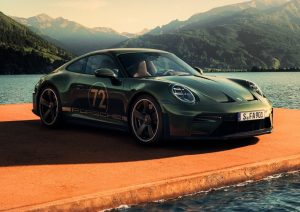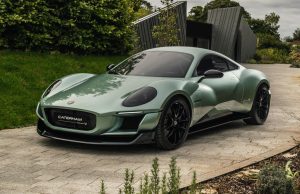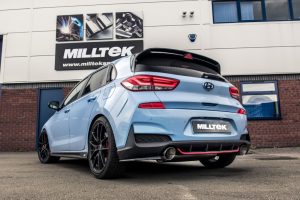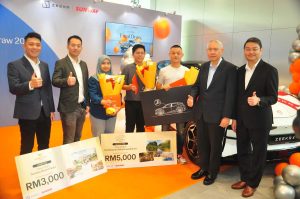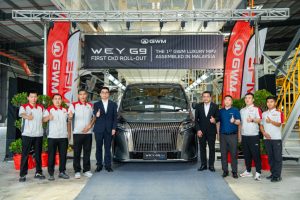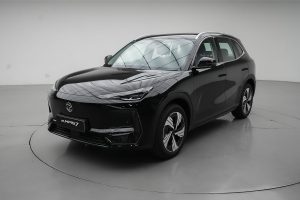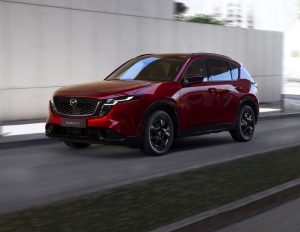Sales of subcompact SUVs are on a strong footing. And Honda wants a piece of the action.
It has decided to jettison the three-row, 7 seat BR-V in favour of an even smaller SUV it believes will prove to be one of its big hitters – if not the biggest.
Positioned below the HR-V, the new WR-V is Honda’s weaponry to go up against the Perodua Ativa – and even the ever-popular Proton X50.
This makes it the first mainstream Japanese automaker to introduce a small SUV in the non-national segment.
The WR-V is closer in size to the Ativa, being a good 7cm wider, while losing out in length, height and wheelbase. The size disparity with the larger X50 is even more pronounced, with the Proton beating it in every dimension.

Still for many people who prefer a non-national small SUV, the Honda alternative would be a fresh and interesting choice.
Honda Malaysia on Monday opened bookings for the WR-V ahead of its launch in the third quarter of this year.
Even before that, it had been busy preparing for the coming of its hot little four-wheeler.
Late last month, it organised a drive for the Malaysian media in Thailand, where journos got acquainted with the Thai-specced WR-V.
In Thailand, the WR-V is imported from Indonesia and offered in two grades, namely the SV at 799,000 baht (RM105,174) and RS at 869,000 baht (RM114,388).

All five test cars made available were the RS variant.
The 5-seat WR-V, now in its second generation, is based on a shortened platform of the BR-V.
The WR-V is an attractive package and will appeal to a wide cross-section of the public beyond just the young demographic the vehicle is aimed at.
The WR-V has pleasing proportions and characterised by short overhangs at both ends for an athletic appearance. With 220mm of ground clearance, it rides high as befits an SUV.
The grille with chrome bits stretches to meld with the slim LED headlamps, underlined by LED daytime running lights. In fact, all RS exterior lightings are LED-based and that includes the front fog lights and sequential turn signals.
The side view shows off 17-inch dual-tone alloy wheels framed by black plastic claddings, power retractable door mirrors and hidden rear door handles ala the HR-V. Too bad the roof rails are plastic and just for show.
The rear is clean and pleasant to look at with slim horizontal LED lights.
A newly designed RS emblem is affixed to the back and grille to tell everyone its owner is driving nothing less than the top model variant.

The interior is generally fine.
The dash is reminiscent of the latest BR-V, featuring air-cond vents sitting atop the dash with a smallish 7-inch infotainment touchscreen underneath that supports wired Apple CarPlay and Android Auto.
The instrument cluster comprises two analogue dials separated by a 4.2-inch TFT multi-information display.
Upholstery is wrapped in synthetic leather and fabric combo with red stitchings in compliance with the RS template.
Red stitchings on the leather steering wheel, red trim on the dash inserts as well as a dark interior amplify the sporty ambience of the WR-V.

The presence of a centre armrest in both rows and six cupholders are a nod to comfort and practicality.
While these are attempts to make the cabin feel premium, there are other elements in there that signal the WR-V is building to a price point.
These show up in the hard plastic door panels, manually adjustable front seats, a hand-operated parking brake, absence of air-cond vents in the rear and only the front passenger seat having a seatback pocket.
Boot space at 380l is not particularly spacious but it’s a good size for a small SUV. And it beats the Ativa and X50 in that aspect. More storage opens up with back seats folded forward in 60:40 configuration.

The WR-V is powered by a 1.5-litre 1.5L i-VTEC DOHC engine which produces 119hp at 6,600rpm and 145Nm of torque at 4,300 rpm. This is the same mill found in the City, BR-V and HR-V (S variant).
Power is put down to the front wheels via a continuously variable transmission (CVT).
The route from Bangkok to Pattaya and Rayong was mostly highways with short stints on trunk roads.
When driven sensibly, the WR-V is a picture of efficiency and quietness until it’s called upon to accelerate hard, whereby the CVT gets noisier as the car gathers speed.

Honda may have improved its CVT over the years but the rubber band effect from all those belts and pulleys still exists — where hard throttle input is not instantly matched by power delivery to the wheels. However, flipping the paddle shifters or switching to Sport mode takes the edge off it, injecting more pep and vigour in the drive.
The WR-V is comfortably refined and quiet at around 110kph but go faster and you start hearing wind noise being more noticeable around the A-pillars and wing mirrors as well as tyre roar.
There’s not much in the way of steering feel, and the ride is on the comfort side of firm as the SUV manages corners with restrained bodyroll.
The body remains composed at highway speeds without any twitchiness that may be expected of a lightweight high-riding vehicle.
Its 5m turning radius makes it easy to maneouvre in tight spots and high ground clearance keep potholes and speed bumps from doing harm to the undercarriage.

Visibility all round is good at the wheel. Front seats with side bolsters are supportive and holds the body in place especially when going at boisterous speeds.
Rear seat space has enough legroom, headroom and elbow room, with seatbacks angled back to provide comfortable support for the long drive.
A bit more thigh support for tall people would have been appreciated but averaged-sized adults would have no issue.
The WR-V is built to be fuel efficient. Combined fuel consumption is officially rated at 5.9l/100km but it’s still a fuel sipper if it turns in real world numbers of under 7l/100km as recorded in the media drive.

What will sweetened the deal is the fact Honda Sensing is standard kit in the SV and RS variants - at least in Thailand.
The Honda Sensing safety suite consists of Collision Mitigation Braking System (CMBS), Lane Keeping Assist System (LKAS), Road Departure Mitigation System With Lane Departure Warning (RDM with LDW), Auto High-Beam (AHB), Adaptive Cruise Control (ACC) and Lead Car Departure Notification System (LCDN).
The RS also gets LaneWatch, which uses a camera installed below the left, passenger-side mirror to relay an image of the area on the left side of the vehicle to the centre screen. This makes it easier and safer to change lanes or make turns.

Honda says the name WR-V stands for “Winsome Runabout Vehicle”. After two days with the car, we are inclined to agree it’s winsome in more ways than one.
As Honda’s budget SUV, the WR-V makes for a great urban runabout and can do the occasional outstation run with aplomb.
It’s got a balance of power, features and road-going manners to make it worthy of consideration.
It’s now up to Honda Malaysia to price it right for it to capture the public imagination.
READ MORE: Honda WR-V launched on July 13, four variants from RM89,900 to RM107,900


















































